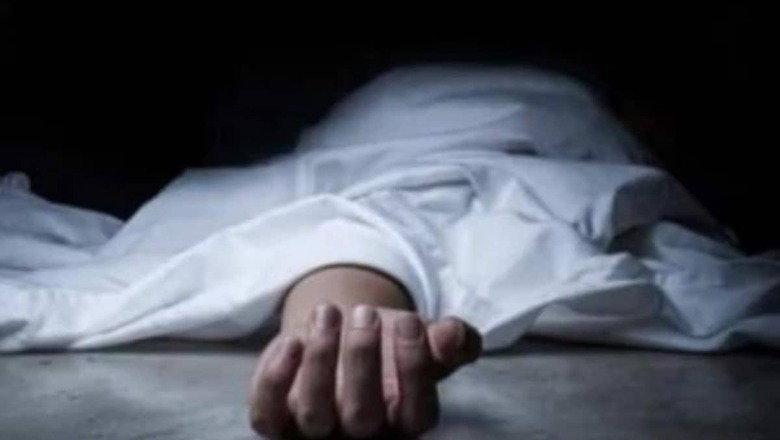
views
India’s Moment under the Sun
Today marks the second day of India’s moment under the sun – the historical G22 Summit in New Delhi under India’s rational presidency. Day 1 achieved the nearly impossible ‘Delhi Declaration’ unanimously. Also, G20 nations set the ambitious climate goal target of tripling renewable energy target by 2030 and global net zero by 2050. Equally historic was the unveiling of the India-Middle East-European connectivity corridor to connect data, trains, ports, energy networks, and hydrogen pipes between the three regions as a collaborative infra push by India, United Arab Emirates, Saudi Arabia, the European Union, France, Italy, Germany, and the United States.
The list of accomplishments is truly long and impressive.
But today is also World Suicide Prevention Day.
On such a momentous occasion, it is blasphemous to talk of the “Growing Student and Youth Suicides in India”. However, I am compelled to write this piece primarily due to two reasons.
One, today also marks the World Suicide Prevention Day, observed globally by the World Health Organisation (WHO) with ‘Creating Hope Through Action’ being the triennial (2021-23) theme of the day.
Two, growing suicide is not only an Indian phenomenon but a global pandemic with more than one million WHO-reported suicides every year. It is a major G20 problem with India, China, Europe, Africa and the US are all prone to it. It is time that G20 leaders wake up to this monster killer threat.
My Foray in Suicide Prevention is Existential
Having lived with incurable manic-depressive insanity (secularly named bipolar disorder) for more than five decades, suicidal ideation has been my existential cohort. I am extremely lucky to have survived at least six serious attempts to die by suicide (excluding near misses when I chickened out). My first such attempt was at the age of 10.
A Researcher of Etiology, Etymology of Suicide and its Prevention
When my op-ed piece ‘Rising Urban and Professional Suicides’ appeared as the main editorial page article in ‘The Economic Times’ on January 23, 2010, I became the first Indian non-psychiatrist (if not the first person) to try to understand and tame the raging bull. Before that, the only Indian research paper known to me was ‘Suicide and its prevention: The urgent need in India’ (2007) by Chennai-based Dr Lakshmi Jayakumar, a lone tigress fighting the cause of suicide prevention in India for decades.
She wrote in 2007 that “the majority of suicides (37.8 per cent) in India are by those below the age of 30 years. The fact that 71 per cent of suicides in India are by persons below the age of 44 imposes a huge social, emotional and economic burden on our society. The near-equal suicide rates of young men and women and the consistently narrow male: female ratio of 1.4: 1 denotes that more Indian women die by suicide than their Western counterparts”.
Her findings and her lifelong pursuits of suicide prevention in India were a clarion call to authorities for change but nothing mattered, and nothing changed.
My 2010 paper also posited that two-thirds of Indian suicides were in the age group 14-44 and that for every reported suicide case, there were at least four which were hidden. And even with the incomplete statistics, India was near the top of the suicide table of the world. I gave a clarion call for the urgent root-cause analysis of the malaise which was causing heavy collateral damage in terms of psychological devastation, societal strain, and humungous economic and financial consequences to families, organizations and society.
Nothing happened once again.
Lancet Research and WHO Study
Thence came 2012, when my friend Dr. Vikram Patel (nominated in 2015 among TIME magazine’s list of the 100 most influential people in the world), in his now famous Lancet paper, calculated that 1,87,000 suicides occurred in India in 2010—ranking second among causes of mortality in people aged 15-29 years.
The findings again fell on deaf ears and so did the seminal findings of 2014’s WHO study on suicides in India that concluded 2,58,000 Indians died by suicide in 2012, a third of all suicides in the world. However, no governmental action was initiated.
And more and more young Indians continued to die by suicide.
True numbers of deaths by suicide in India were impossible to comprehend due to the stigma attached to suicide and the draconian provision of Section 309 of the Indian Penal Code (IPC)- “Whoever attempts to commit suicide and does any act towards the commission of such offence, shall be punished with simple imprisonment for a term which may extend to one year or fine or both.”
My extensive research on the causes and consequences of suicide and how to prevent it led me to publish a full-page article in ‘The Hindu’ in 2017, titled ‘Zero Suicide: Not a Utopian Goal’, where I called for a systems-based approach to suicide elimination in India and wrote that even one suicide was unacceptable and though zero suicide goal was aspirational and audacious, it was a goal whose time had come.
I was forced to conduct a humongous alternative study that established psychological and social consequences apart there was an urgent economic imperative to suicide prevention in India because even if we assumed that 50 per cent of those who committed suicide annually would have had no earnings, even then those who died by suicide if they had lived their full lifespans, the approximate loss to the economy at then per capita income from the loss of the other 50 per cent would be Rs 25,000 crore.
And every year this amount gets compounded.
Nothing much happened again despite the bold but futile attempt of Section 115 of the Mental Health Care, Act, 2017 (Section 309 IPC still exists in the statute book and that is the only guiding law for the police in India) to decriminalize suicide and the largely non-functional Ministry of Health and Family Welfare, Government of India’s National Suicide Prevention Strategy, November 2022. Even the lone government suicide prevention helpline “Kiran” (1800-599-0019) launched with much fanfare has proved to be a nonstarter.
Numbers Speak
Meanwhile, in India, suicide has since risen to become the leading cause of death in the 15-29-year age group, exceeding road traffic accidents in men and maternal mortality in women.
Worse, even based on unreliable statistics from the National Crime Record Bureau (NCRB), India has been witnessing an increasing surge in suicidal deaths, with a rate of 10.2 in 2018, 10.4 in 2019, 11.3 in 2020, and 12 in 2021 (per lakh population). The rise from 10.2 to 11.3 per lakh in just the last three years is horrifying.
Rising Students Suicide
Even going by NCRB suicide data, in 2021, more than 35 students died by suicide daily with over 13000 suicides a 4.5 per cent increase from 12,526 in 2020. Actual numbers are bound to be far higher as we Indians have expertise in not counting death by suicide properly. Only 20 per cent of deaths in India are certified for causes.
As per data provided by the National Crime Records Bureau (NCRB) in 2021 student suicide was seventy per cent more in one decade than the 7,696 student suicides in 2011.
The curse is worsening fast, and the incidence of suicide and suicide attempts is growing like wildfire.
NCRB’s suicide data for 2022 has not yet arrived, but the Excel sheet numbers on my laptop created from the daily suicides reported in English and vernacular newspapers, and visual and social media give me a shudder. The number of student suicides in the first six months of 2023 is fast approaching 10,000. Even if my final numbers turn out to be overstated, roughly two student deaths by suicide every hour are far too many. It needs to be arrested forthwith and reversed, or else India’s ‘demographic dividend’ may turn into a ‘demographic curse’.
Kota Factory Suicides are tip of the iceberg
This year, student suicides have gotten more attention because of greater media coverage of the unfortunate 23 deaths by suicide at the Kota Engineering and Medical Coaching Factory but if one just keeps the eyes open, one will find that student suicides are ubiquitous, everywhere in schools, colleges and academic centre of engineering, medical and management excellence. And their number (both reported and camouflaged) is growing by leaps and bounds.
Worse, suicide just got younger. The youngest suicide age that I have counted is of a five-year-old in Mumbai, a seven-year-old in Kolkata and plentiful class 10 and 12 students all over the country.
Key Causes of Suicides
With every suicide, we hear one cause. NCRB lists more than thirty disparate causes of suicide. Though suicide due to worsening mental illness is one uptick, there is much more to suicides than just mental illness. Two things are common across all suicides — first, the person who dies by suicide gives enough opportunity to people around to save him/her and second, extreme stress, dejection, desperation and feelings of hopelessness are the ‘common minimum denominators’ of all suicides.
It is time to act resolutely.
Way forward to Eliminate Suicides
I reiterate nothing less than the audacious pursuit of ‘Mission Zero Suicide India’ will work. Here is my oft-repeated ten-point actionable agenda for reversing and eliminating suicide in India, both of young and not-so-young.
My nine-point Programme for India, which I call Nine to Zero-
- Make the elimination of suicide not just a national mission but also every citizen’s mission. Every Indian needs to become a suicide prevention gatekeeper with the motto – “Each one, Save One.”
- Jumpstart the National Alliance for Suicide Prevention in public, private and NGO-coalition mode. Mere governmental actions are not enough.
- Heavily invest in purposeful targeted multidisciplinary research. Suicide has a complex etiology.
- Think global but act local. Indian states are as different from each other, if not more, than some countries are, and one size will not fit all.
- A dovetailed suicide prevention strategy is critically needed at the Centre, state, city and village levels; this is a long-haul effort. The mere November 2022 strategy by MOH&FW will be a non-starter.
- It is time to learn from the successes and failures of others and create India’s own ‘next practices’. It is time to urgently create a permanent multidisciplinary national task force for putting National Suicide Prevention Strategy, 2022 into action with tailor-made implementation plans and evidence-based modifying.
- Adopt an empirical, evidence-based approach to intervention duly segmenting every section of society more so students and youth.
- Reduce access to the means of suicide, use technology (to count suicides and suicide attempts, as well as to disseminate why and how it has to be eliminated) and introduce a multidisciplinary review of suicide attempts.
- Introduce best practices communication strategy, including for print, visual and social media.
And point ten, or should I say, Point Zero: we must start now. Any inaction now will be suicidal for “India that is Bharat”.
We are already 76 years late in the day.
The author is a multidisciplinary thought leader with action bias, and India based International Impact Consultant. He is Principal Instigator of the Action Group- Mission Zero Suicide India” and was a Member of Government of India Mental Health Policy Group from 2011-2014. Sahay works as President Advisory Services BARSYL. Views expressed in the above piece are personal and solely that of the author. They do not necessarily reflect News18’s views.


















Comments
0 comment